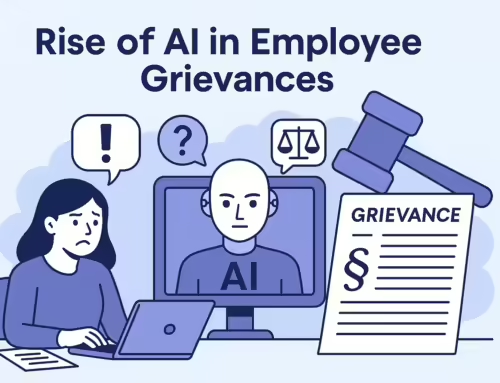When it comes to managing performance we all seem to get hung up on the issue of holding a disciplinary hearing and what could go wrong.
Here are some simple tips to make your hearing as stress free as possible.
Step 1 – know your facts
Before you go rushing off and sending out letters inviting people to a hearing….stop and read your employee handbook and the employee’s contract of employment. First thing to look at is the employee start date…the longer the service the more careful you need to be, and if they have under two years service the more relaxed you can be – click here for reasons why. The second thing to read is the disciplinary policy to make sure you are sticking to your own rules in terms of timescales and how you do things like suspension from work.
Step 2 – get some evidence
So with the contract read and handbook, err, to hand, you may know what the person has done but when investigating a disciplinary its not what you know, its having the evidence as well to support you. Evidence could be a witness statement from a colleague or a customer, paper records, your own observation or CCTV etc. Make sure you have taken it all in and that it backs up your story before progressing further.
Step 3 – hold an investigation meeting
A great way to diffuse the tension of a disciplinary hearing is to hold an investigatory meeting with the employee before hand. These are good as you do not have to send a letter inviting an employee to an investigation meeting, but it makes it clear to the employee that something is up and action is likely to be taken. Plan your investigation meeting and write your questions out in advance – you can use the open, probing, summary & close method to structure your questions.
In this meeting you present your evidence, ask your questions and note the employee responses. If your evidence is good from step two you won’t have any surprises at this stage and it’s simply a case of hearing and writing down the employee’s side of things.
The other big advantage of an investigation meeting is that if the employee is not guilty of an act, it’s easier to repair the working relationships after an informal investigation rather than having to back down from a disciplinary hearing.
Step 4 – make a decision
After the investigation meeting, if the employee is not able to provide a decent explanation of the evidence you have, you can then decide to invite the employee to a hearing. By holding the investigation meeting, the employee (if they know they are guilty) will most likely be expecting a hearing invite and so when it arrives in the post they will be less confrontational with you. If you do decide to hold a hearing remember to give between 48 and 72 hours notice to the employee, make the invite in writing and let the employe be accompanied.
The golden rule
Never rush into a hearing, by taking the time to investigate matters properly, have evidence and hold an investigation meeting you are demonstrating that you have taken the issue seriously and have acted professionally.




